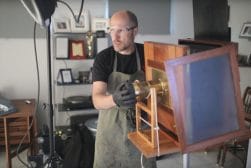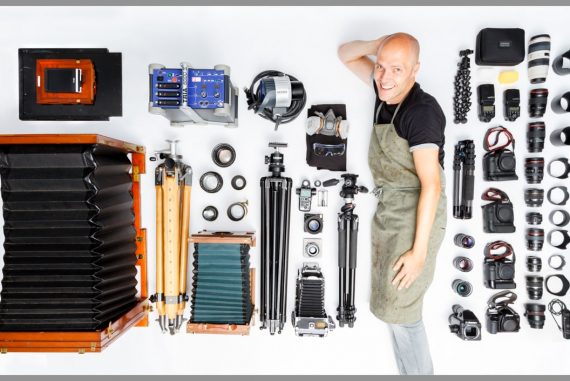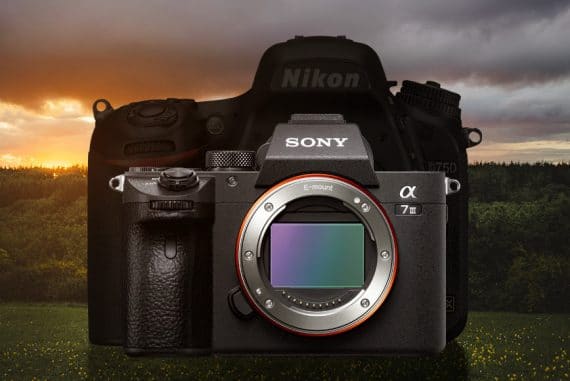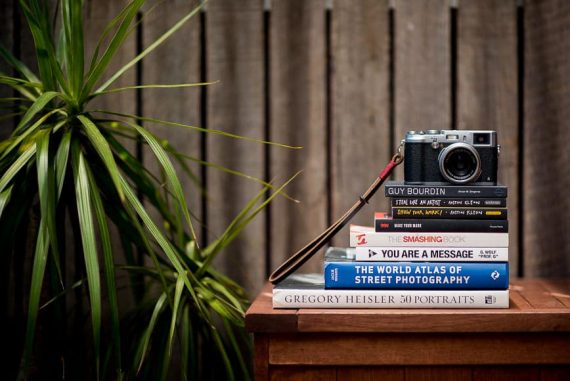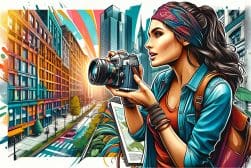
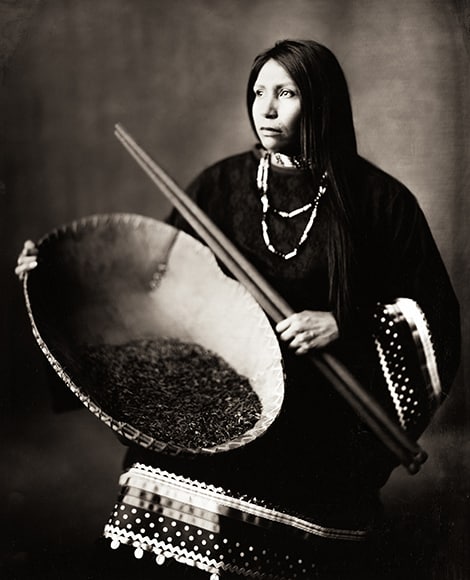

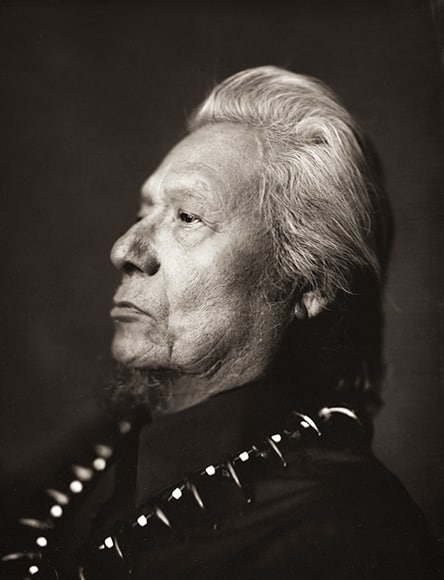



Shane Balkowitsch
Portrait | Last Updated: April 9, 2021
I am a wet plate collodion photographer in Bismarck, North Dakota. I have been practicing the historic process for a little over seven years and have made over 3400 black glass ambrotypes in that time. I never owned a camera before 2012.
I saw a wet plate image online, and I was immediately drawn to the process and have been chasing it ever since. Frederick Scott Archer invented the historic wet plate process in 1848.
Each and every day, the world is filled with millions and millions of cellphone digital photographs that have no value, character, significance, or physical form.
That is not the case with a wet plate. The wet plate process is magical, and the end result is tangible and precious.
Digital photography of today relies on technology. Wet plate photography relies on 160-year-old chemistry, a bit of magic, and some luck.
I think it is very important that, as technology moves forward, we embrace and continue to celebrate and not forget important processes from the past. Wet plate photography is one of those processes.
I am very proud to be one of four people pouring wet plates in the state of North Dakota at this time. Every time I show someone the wet plate process, they are absolutely amazed regarding the ability to get a photograph using some chemicals and pieces of glass that I cut by hand.
It is my goal to capture as many people as I can in this process. Friends, family, loved ones, or complete strangers, it does not matter. I want to share with as many people as possible this beloved process that dates back to 1848.
Wet plate photography was such an important medium for expression in the past and I want it to continue to be today. It has been said that, “you do not take a wet plate photograph, it is given to you” and this is so very true.
I have over 500 of my works curated in 20 archives around the globe. I have a plate of Evander Holyfield at the Portrait Gallery at the Smithsonian and my recent plate, “Standing for Us All” of Greta Thunberg, was just accepted into the Library of Congress in Washington, D.C.
The State Historical Society of North Dakota is curating my series “Northern Plains Native Americans: A Modern Wet Plate Perspective.”
My main gear is my 8×10” large format studio camera by Alessandro Gibellini from Italy (I call the camera Red Molly). In fact, I have just received Red Molly II as a backup from my friend in Italy.
I have different size inserts for the plate holders, but all my serious work is shot in the 8×10” format. I love this larger size format because the glass has a weight and a presence to it that you do not get with small plates.
I only shoot on black glass. There is something romantic about the darkness of the glass and the weight of the glass.
I almost exclusively use a Carl Zeiss Tessar 300mm f/4.5 lens. I own all the sizes, but for me, this size works great for my portraits.
I have to shoot wide open in my natural-light studio and the exposure time with Northern light is usually around 10 seconds. I have an affinity to the sharpness and clarity that this more modern lens brings to the process and my work.
I do not have a shutter on my camera. I manually remove and replace the lens cap with every exposure.
I built the largest natural light wet plate studio, in the states, in over 100 years. I do everything I can to use the light from the sun.
Depending on what time of the year it is, I sometimes have to bolster the natural light with continuous fluorescent bulbs. That is something I try to avoid. As I always say, “Natural light is king.”
I do not use bags or straps with my camera. My camera is able to be folded up for travel, if I wish.
I have a vintage Fatif, made in Italy, large studio tripod that I use for my creative work in the studio. It gives me amazing flexibility and control over the angle of the shot.
I use Lightroom as my only software package that I own. It allows me to crop and fix the brightness and tones of the scanned plate. I always try to get the scans as close as I can to the original plate, which can be very difficult.
I never consider scans of my plates my work; my work only exists in silver on glass.
www.sharoncol.balkowitsch.com/wetplate | @balkowitsch

Check out these 8 essential tools to help you succeed as a professional photographer.
Includes limited-time discounts.





